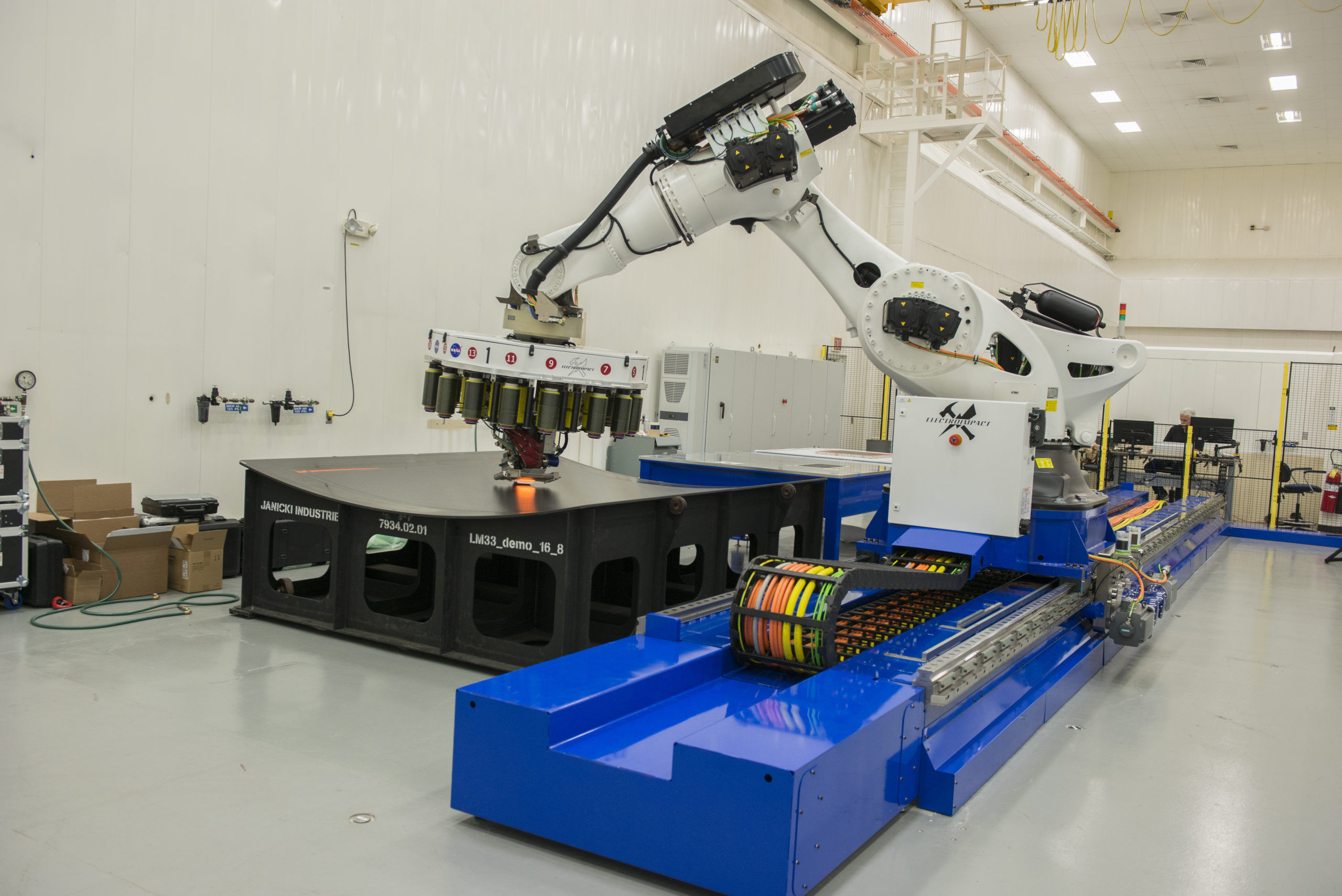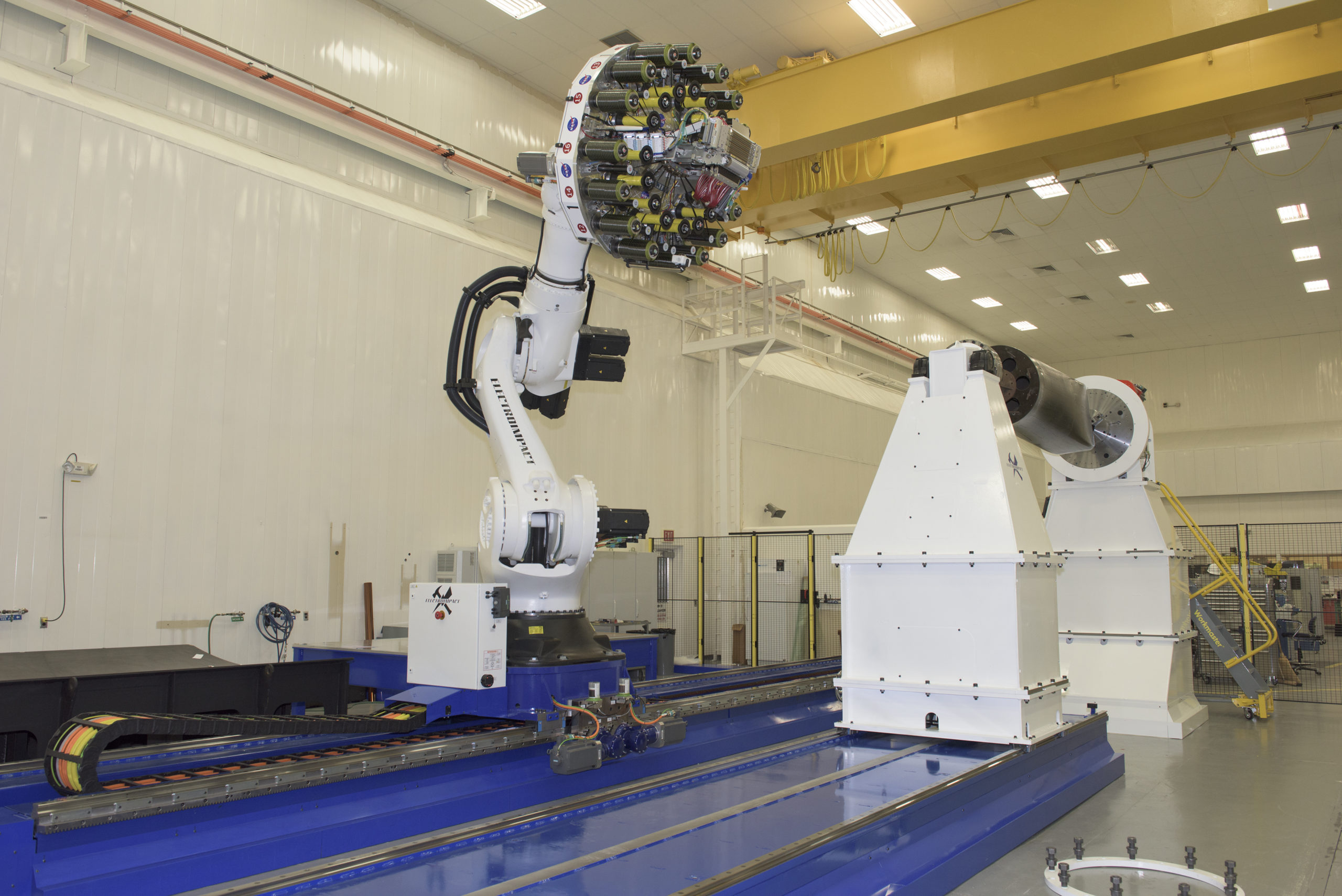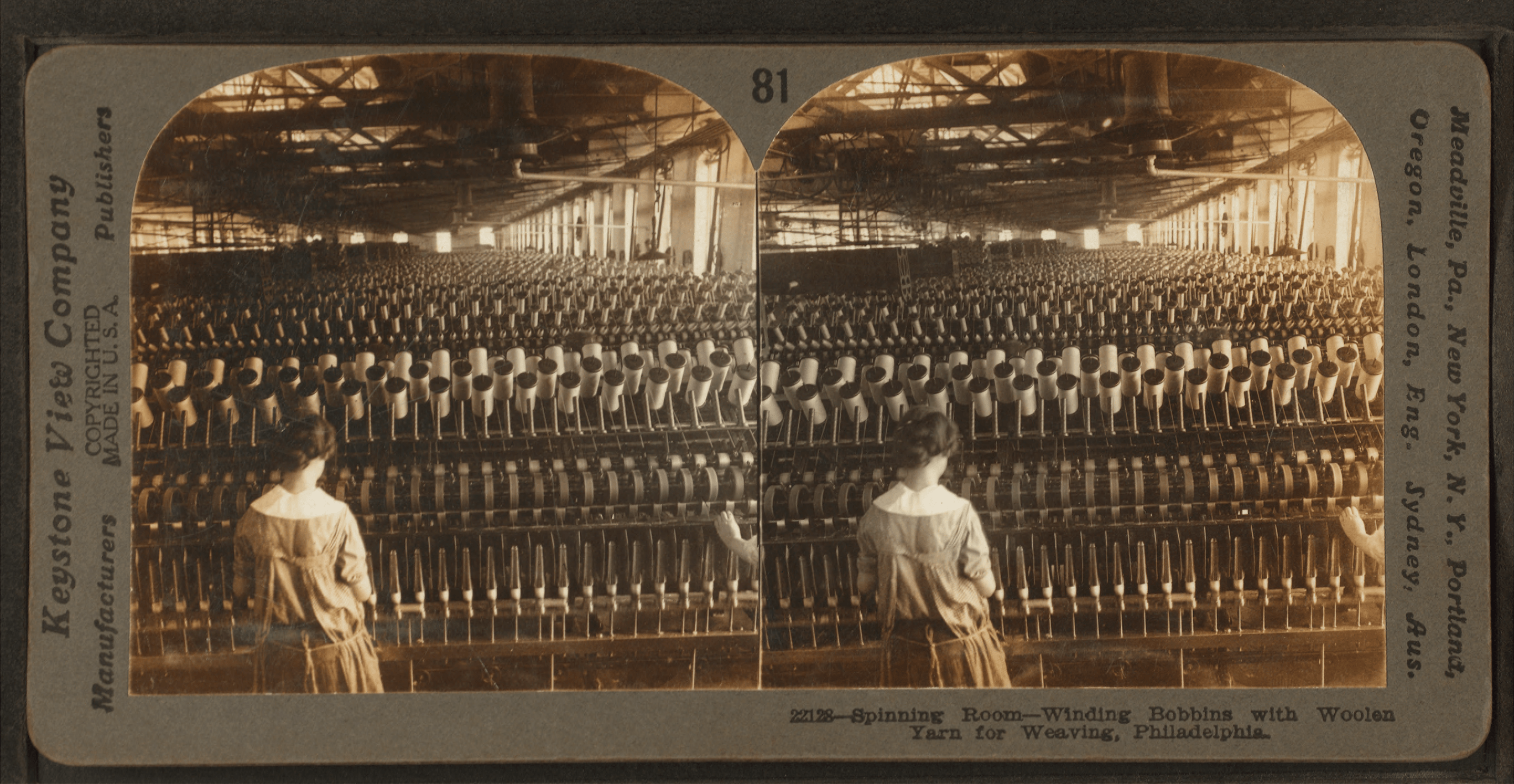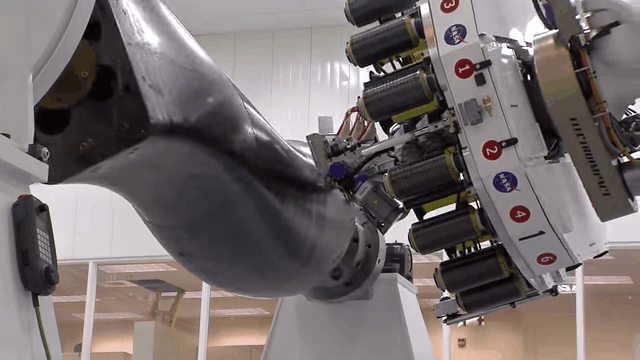When one robot leaves the world, another enters it.
There’s plenty of carbon fibre in space right now. It’s the best bet we have for making spacecraft lighter — and it’s going to be key on deep space missions where every gram of food, water, and fuel is carefully planned. But making these parts isn’t easy, or cheap. Prototyping and testing new carbon fibre designs is slow, expensive, and labour-intensive. And as NASA pushes towards putting humans into deep space, it will need to make huge leaps in manufacturing to develop the spacecraft capable of these long, distant journeys.
This year, NASA got a tool that will make prototyping those parts way easier. It’s a 21-foot robotic arm whose head is made up of 16 rods that look like oversized sewing spools, attached to a long, 12m track that allows the robotic arm to slide around a model.

Wrapped around the spools are carbon fibre threads, which are unwound as the arm “sculpts” a composite part designed by NASA’s engineers. It’s one of the largest composite robots ever made, and can build objects as wide as 8m, which means they’re “some of the largest composite structures ever constructed for space vehicles,” according to Justin Jackson, an engineer on the project.

The printer was built by a company called Electroimpact, which is responsible for developing the technology that layers super-thin carbon fibres into permanent forms. Their machines are elaborate, very expensive affairs — with spool heads that almost recall the spinning rooms of 19th century textile mills.


The company calls this process automated fibre placement, and it’s a big step for carbon fibre composites because the arm can create complex shapes very quickly. This means NASA can “drastically reduce the cost and improve the quality of large space structures,” as project manager John Vickers puts it in a release today.
Electroimpact helped NASA customise its own arm, and now it’s poised to begin its life helping the agency develop craft at Marshall Space Flight Center in Alabama. The idea is “to build and test these structures to determine if they are a good fit for space vehicles that will carry humans on exploration missions to Mars and other places,” says the space center’s Preston Jones.
Of course, the robot will help build other stuff too — like pieces of clean rooms. Carbon fibre is getting cheaper and more high-quality by the day, and eventually, the design work being done here at Marshall could find its way into our every-day lives. For now, it’s cool to know that from this oversized printing bed, the next generation of spacecraft may slowly emerge.
